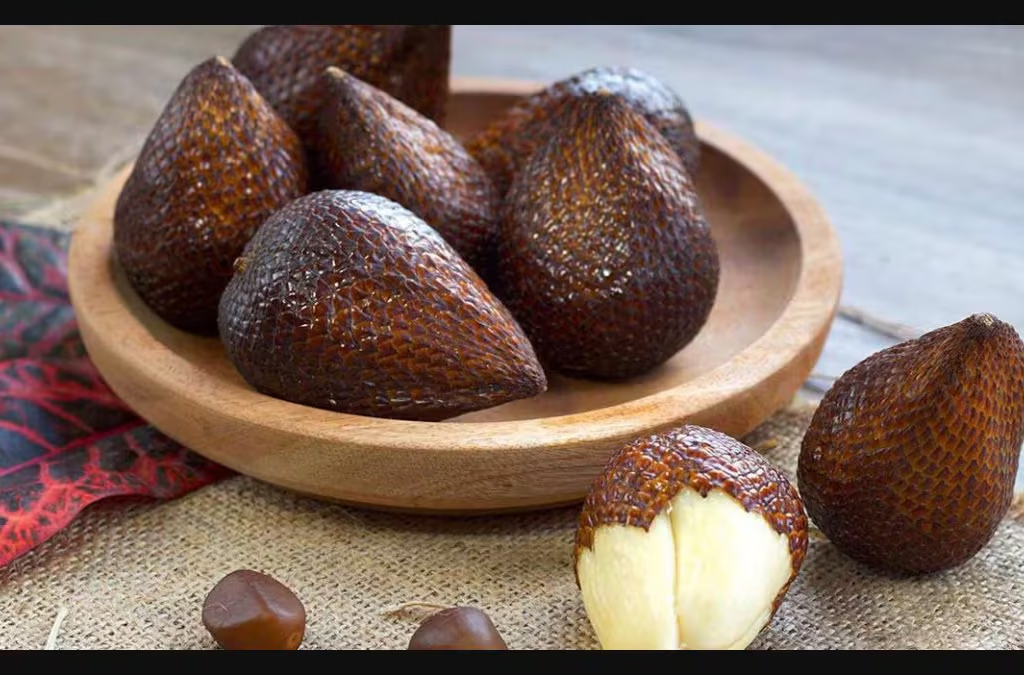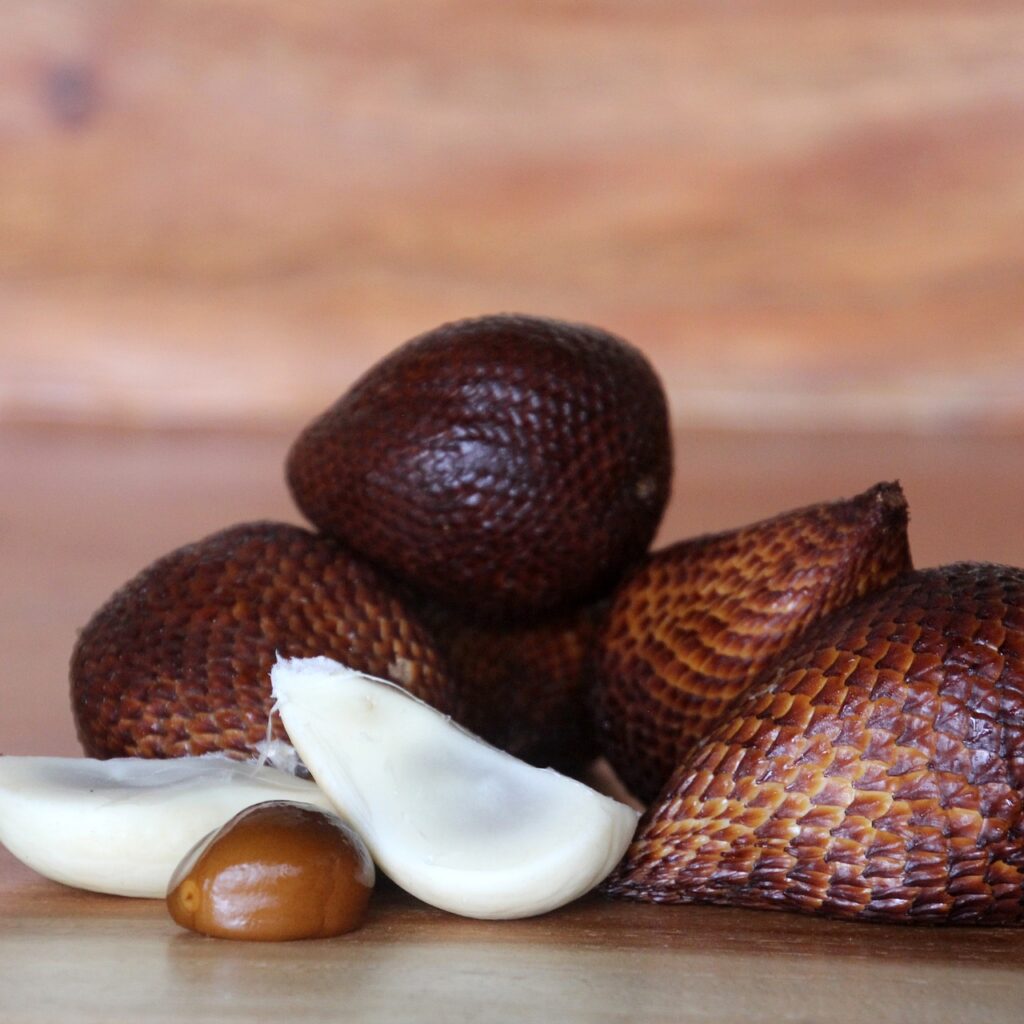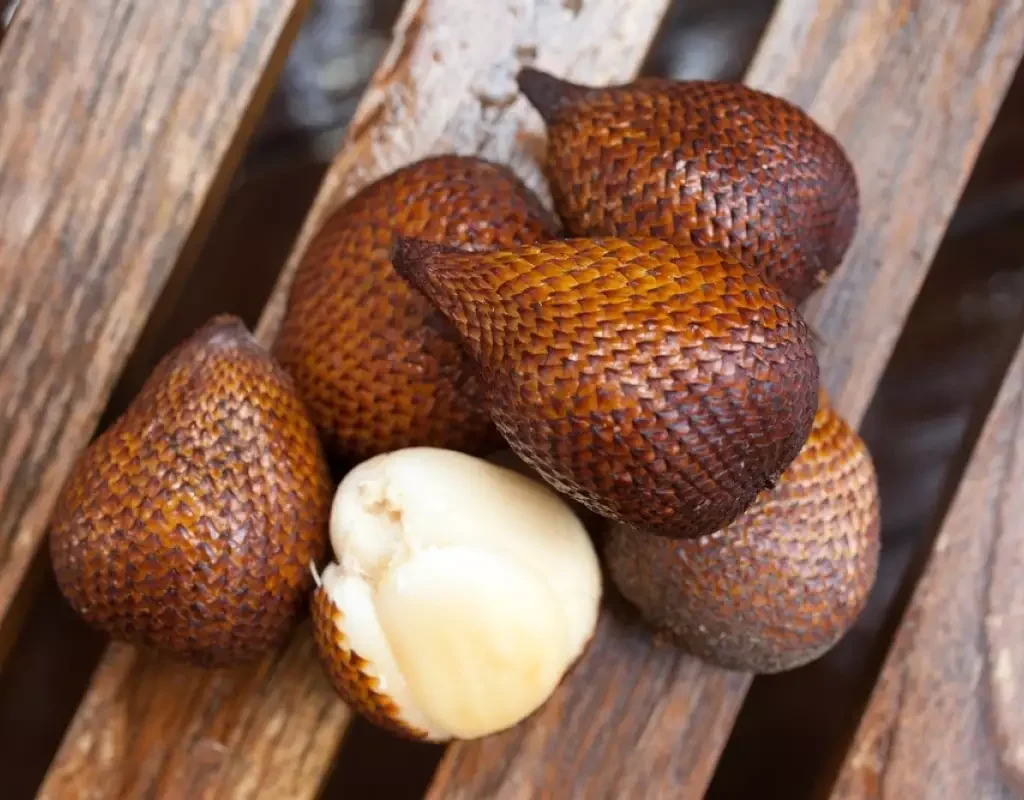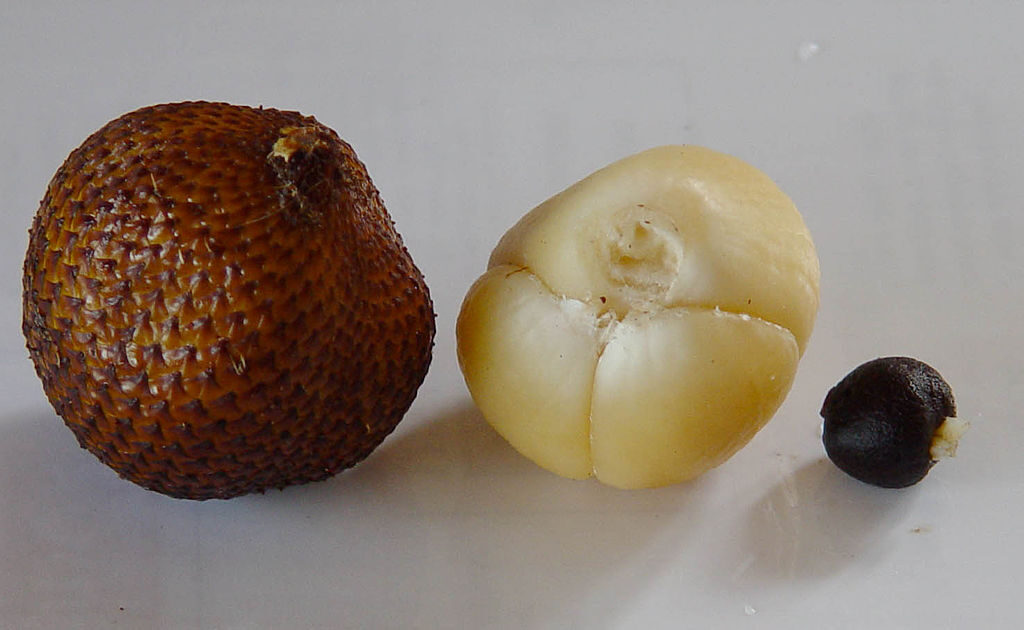The Salacca fruit, also known as snake fruit due to its reddish-brown scaly skin, is a unique tropical delicacy native to Southeast Asia. Revered for its sweet-tart flavor, crisp texture, and intriguing appearance, Salacca has grown in popularity both as a fresh fruit and as a component of regional culinary dishes. Among the countries cultivating this exotic fruit, one nation stands out as the world’s largest producer. In this comprehensive article, we explore which country leads the world in Salacca production, the factors contributing to its dominance, and the cultural, economic, and health significance of this fascinating fruit.
What is Salacca Fruit?

Salacca is a species of palm tree belonging to the Arecaceae family. The fruit grows in clusters at the base of the palm and is known for its thin, scaly, snake-like skin that can be easily peeled to reveal creamy, tangy flesh inside.
Scientific Name: Salacca zalacca
Common Names: Salak, Snake Fruit, Salacca
Origin: Indigenous to Indonesia, specifically Java and Sumatra
Historical and Cultural Importance
Salacca has been cultivated in Southeast Asia for centuries and holds a special place in traditional markets and local cuisine.
- In Indonesia: Consumed fresh or used in traditional desserts and pickles.
- In Thailand and Malaysia: Featured in spicy salads, syrups, and preserved forms.
- In Bali: Salacca Bali, a popular variety, is a prized offering in religious ceremonies.
The Largest Salacca Producer in the World: Indonesia

Indonesia is the largest producer of Salacca fruit globally.
Why Indonesia Leads Salacca Production
1. Indigenous Origin and Ideal Climate:
Salacca is native to Indonesia, particularly Java, Sumatra, and Bali, where the hot, humid climate, rich volcanic soil, and abundant rainfall provide ideal growing conditions.
2. Extensive Cultivation Practices:
Indonesia has devoted significant land area to Salacca plantations, particularly in Yogyakarta, East Java, Bali, and South Sumatra.
3. Cultural Affinity and Domestic Demand:
The fruit holds a cherished place in Indonesian diets and traditional medicine, ensuring a steady domestic market.
4. Varietal Diversity:
Indonesia cultivates several famous Salacca varieties, including:
- Salak Pondoh from Yogyakarta
- Salak Bali from Bali
- Salak Gula Pasir, known for its sugar-like sweetness
5. Established Export Networks:
Indonesia has developed infrastructure for processing and exporting Salacca to neighboring countries and regions like Singapore, Malaysia, Hong Kong, and the Middle East.
Production Statistics
- Indonesia produces over 1 million metric tons of Salacca annually.
- The provinces of Yogyakarta and Bali are the top contributors.
- Indonesia accounts for over 85% of global Salacca production.
Other Salacca Producing Countries

While Indonesia dominates the global market, other Southeast Asian countries also cultivate Salacca, albeit on a smaller scale:
- Thailand: Known for Salak Si Thong, often used in desserts.
- Malaysia: Grows Salacca in Johor and Pahang.
- Philippines: Limited commercial farming in Mindanao.
- Vietnam: Cultivation primarily for local markets.
Nutritional and Medicinal Benefits
Salacca is not just a culinary delight but also a nutrient-packed fruit:
- Rich in Fiber: Aids digestion and gut health.
- Vitamin C: Boosts immunity and skin health.
- Tannins: Possess anti-diarrheal and antioxidant properties.
- Potassium and Iron: Support cardiovascular and blood health.
Health Benefits:
- Improves eyesight due to beta-carotene content
- Supports weight management
- Regulates blood sugar levels
- Acts as a natural remedy for diarrhea in traditional medicine
Common Uses

- Fresh Consumption: Peeled and eaten raw for its tangy-sweet flavor.
- Pickles and Preserves: Popular in Indonesian and Thai cuisines.
- Salads: Combined with spices, coconut, and other tropical fruits.
- Desserts: Used in syrups, compotes, and traditional sweets.
- Exported Canned Products: Peeled and preserved for international markets.
Economic Importance in Indonesia
The Salacca industry plays a vital role in Indonesia’s agricultural economy:
- Rural Employment: Provides livelihoods for smallholder farmers and plantation workers.
- Agro-Tourism: Plantations in Bali and Yogyakarta attract domestic and international tourists.
- Value-Added Products: Processed Salacca goods like chips, candies, and syrup-based desserts are popular.
- Export Revenue: Growing demand in Southeast Asian markets and niche segments globally.
Challenges in Salacca Production

- Pest and Disease Management: Susceptible to borers and fungal diseases.
- Post-Harvest Loss: High perishability requires efficient handling.
- Market Fluctuations: Dependence on domestic consumption and regional exports.
- Limited Global Awareness: Salacca remains underrecognized in Western markets.
Research and Innovations
To support Salacca’s growth and sustainability, Indonesia is investing in:
- High-Yield Varieties: Salak Pondoh Super and Salak Gading.
- Organic Cultivation Practices: Eco-friendly farming methods.
- Post-Harvest Technologies: Improved storage and transport facilities.
- Export-Oriented Policies: Enhancing product standards for international markets.
Sustainability and Environmental Benefits
- Agroforestry Compatibility: Can be grown alongside other tropical crops.
- Soil Erosion Prevention: Dense undergrowth in plantations stabilizes soil.
- Low Chemical Input: Requires minimal pesticides and fertilizers.
Future Growth and Global Trends
- Rising Demand for Exotic Fruits: Increasing popularity in Asia-Pacific and Middle Eastern markets.
- Functional Food Trends: Leveraging Salacca’s fiber and antioxidant content.
- Agro-Tourism Opportunities: Interactive farm visits and tasting experiences.
- Processed Salacca Products: Expanding canned, dried, and snack ranges for export.
Conclusion
Indonesia stands as the world’s largest producer of Salacca fruit, thanks to its indigenous origin, optimal growing conditions, rich varietal diversity, and cultural integration. This unique fruit continues to captivate local and regional markets, contributing to rural livelihoods, agro-tourism, and export earnings.
As health-conscious consumers worldwide seek out exotic, nutrient-dense fruits, Salacca is poised for international recognition. Indonesia’s leadership in sustainable production practices and product innovation ensures that Salacca’s future remains as bright as its distinctive scaly skin.





Leave A Comment